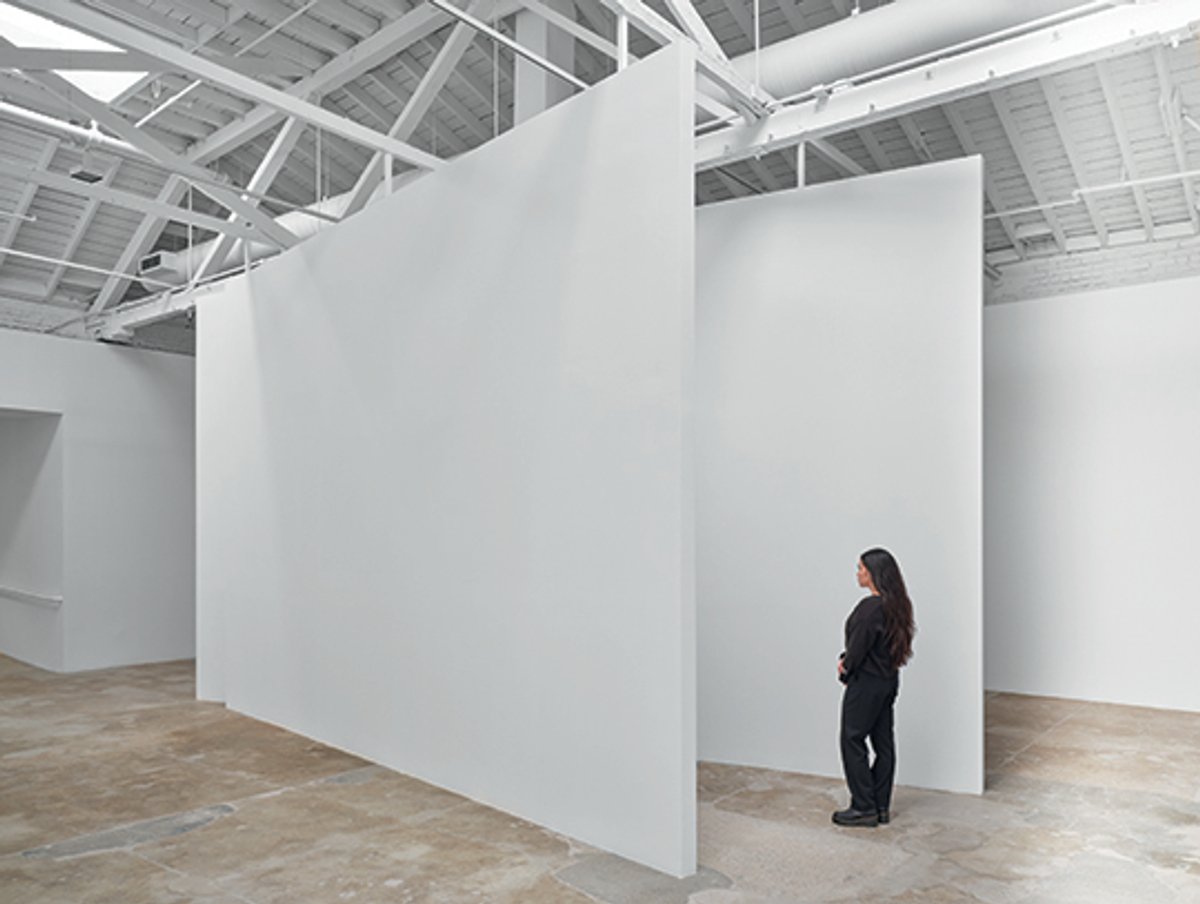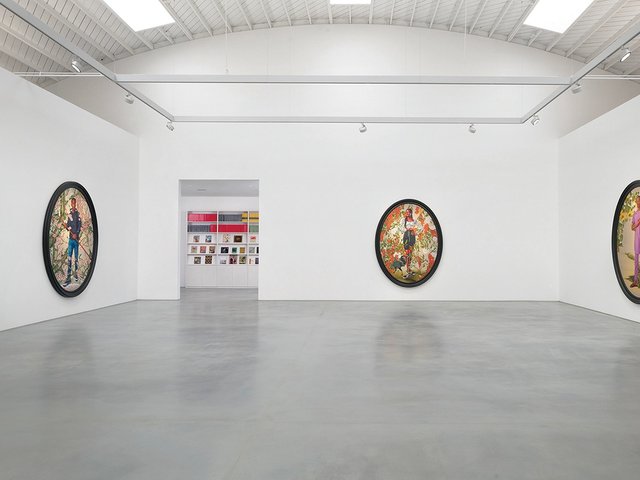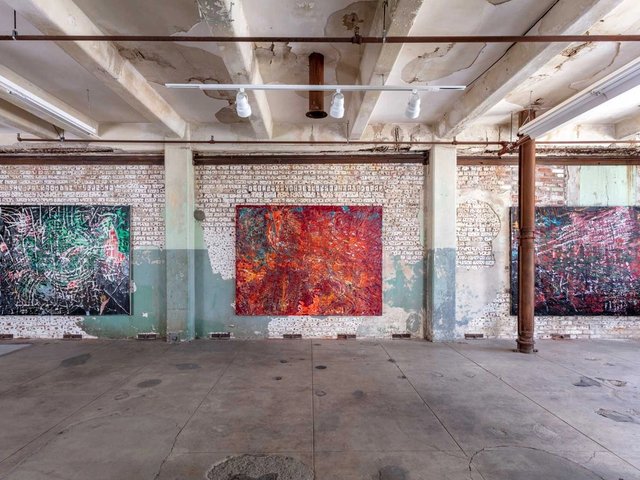Unknown to each other and completely uncoordinated, the galleries Marian Goodman and Hauser & Wirth opened significant exhibitions in Los Angeles this week that have something in common: thoroughly and subversively empty rooms.
At Marian Goodman, a historical survey of Bruce Nauman’s early years in the Los Angeles area, Pasadena Years (until 26 April), begins with mesmerising performance-based videos from 1969 and culminates with a 43ft-by-43ft skylit room where no art is hung or installed. Small posters stacked on a pedestal outside the space have a pithy text by Nauman about “trying to get to the center” of some place. The last line is: “Remain.” The work is called Text for a Room, and dated 1973/2025 as the first version was done for his 1973 retrospective at the Los Angeles County Museum of Art.
“The piece has a lot to do with disappearance,” says Marian Goodman gallery president Philipp Kaiser, who curated the show. “For me, the piece is about centring your body, walking into the void and feeling your
own finality.”
At Hauser & Wirth, meanwhile, the new David Hammons show (until 1 June) opened without a press release or curatorial statement and without the presence of any art objects—at least that you can see, given that the entire space is shrouded in darkness. Visitors must lock away their phones before receiving a small blue flashlight. When they enter, they can feel their way through the space, encounter flashes from other people’s lights and perceive the inky contours of walls.
This work, Concerto in Black and Blue, was first realised in 2002 at Ace Gallery in New York. Glenn Ligon once framed the piece as Hammons’s response to James Turrell, a Black artist taking on Light and Space work, before adroitly undermining that Black-white binary. The idea of an empty room is itself a dialectical coin begging to be flipped: once inside, a viewer is almost bound to perceive the exit sign, dust motes or their own feet in new ways.
But you will not hear this from Nauman and Hammons, who are notoriously elusive and press-averse. Neither has spoken publicly about their reasons for revisiting their empty spaces. The context for both gestures, beyond their Duchampian lineage, remains unclear. Could the empty rooms at this moment in American history represent a contemplative centre in a growing fascist storm? Could they be a nod to mortality or death? Or how about simple f-you to the ever-churning art market?
Kaiser says Nauman did not discuss it with him in this way. “Bruce doesn’t believe in intentionality,” he says. “He’s a very curious, open-minded man who thinks speaking about the work would narrow it down. But I can’t speak for him.”
Kaiser adds that the work “probably will be for sale to an institution”, but for now resides in Nauman’s own collection. A Hauser & Wirth spokesperson says the Hammons work is not for sale.




